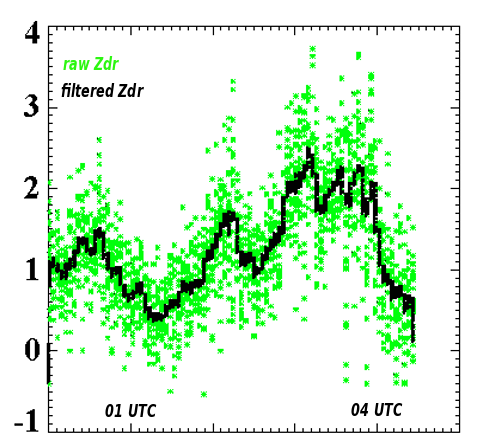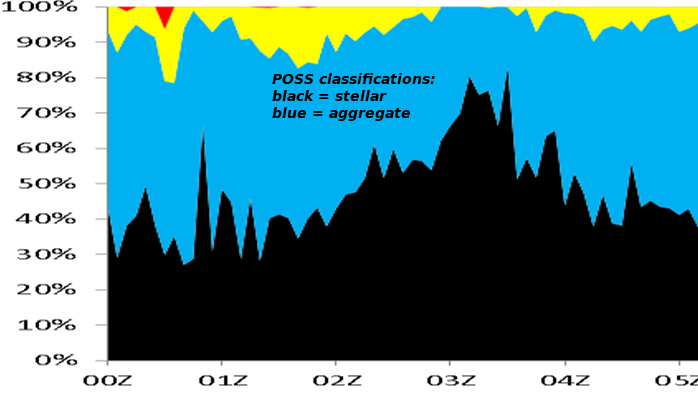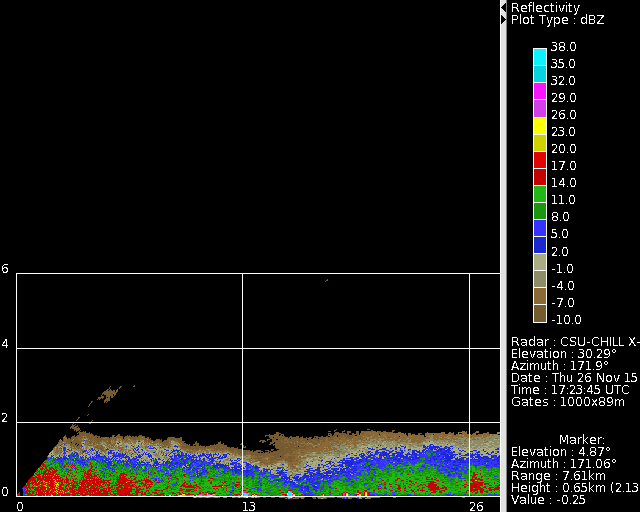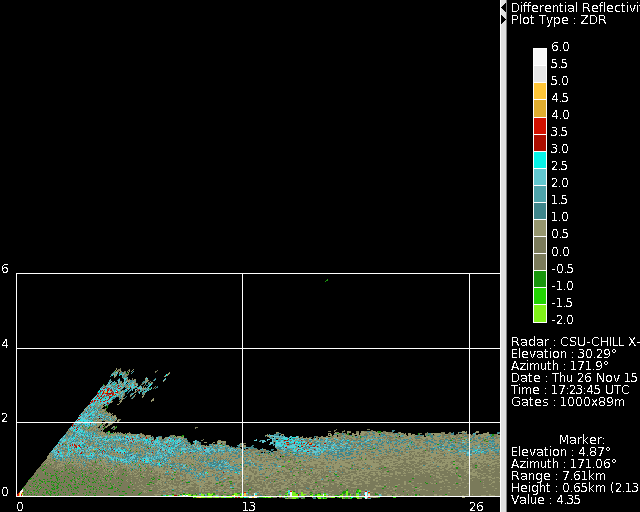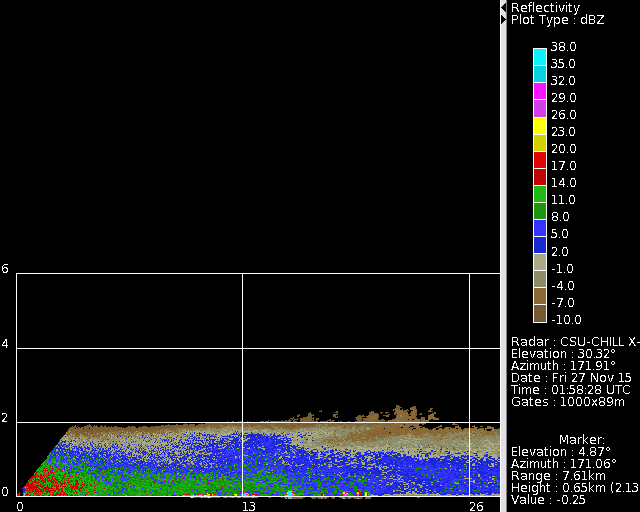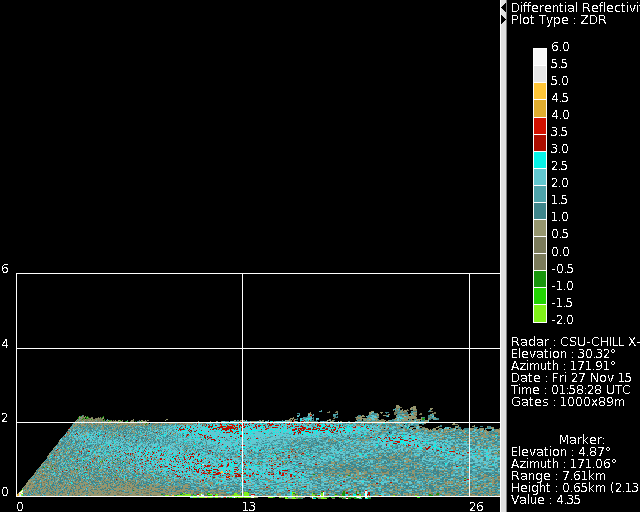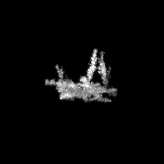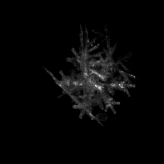DPWX/Variations in snow crystal riming and Zdr: 26 - 27 November 2015
Two snow crystal regimes observed on 26 - 27 November 2015 in the MASCRAD project
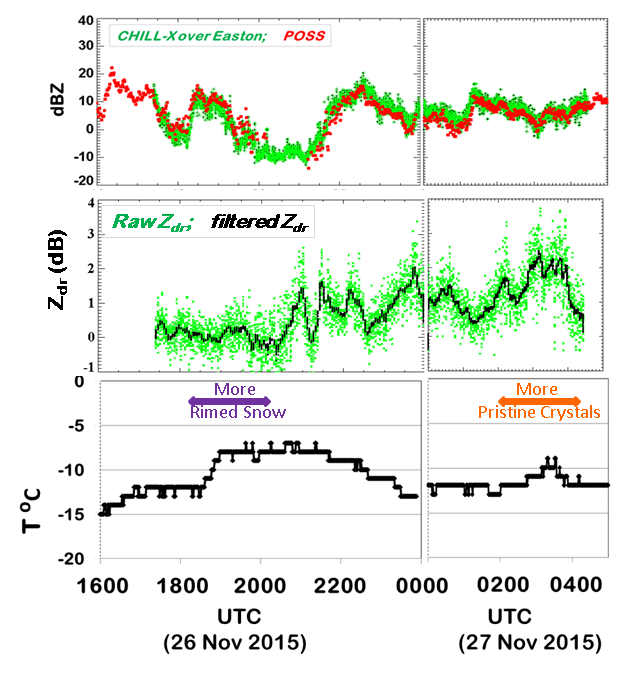
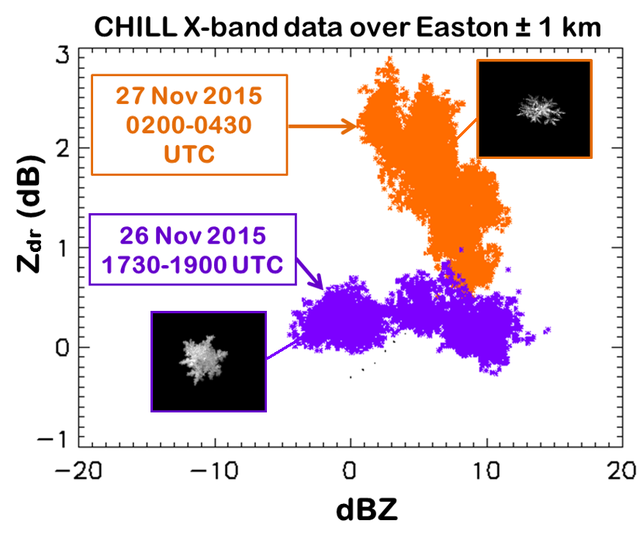
26 Nov 2015 1723 to 2010 UTC X-band Zh (rimed crystals)
Reflectivities reach 14 dBZ (red) at various times, especially near the surface. In general the height gradient of reflectivity is larger than in the evening, pristine crystal period (see next loop series).
|
|
||
|
26 Nov 2015 1723 to 2010 UTC X-band Zdr (rimed crystals)
Note minimal Zdr variations at the surface at Easton during ~ -7 to +15 dBZ Zh variations. This gives the "flat", fairly constant Zdr pattern in the purple (daytime) points of the Zdr vs. Zh scatterplots.
|
|
||
|
27 Nov 2015 0200 to 0408 UTC X-band Zh (pristine crystals)
Compared to the daytime period loop, the echo depth is slightly deeper, but maximum reflectivity levels, and consequently height gradient of reflectivity, are reduced from their daytime period values.
|
|
||
|
27 Nov 2015 0200 to 0408 UTC X-band Zdr (pristine crystals)
Unlike the morning (purple) period, Zdr varies inversely with Zh. This gives the "angled" appearance to the orange points in the scatterplot.
|
|
||
|
26 Nov 2015 1900 to 1909 UTC selected MASC images
Times for MASC image extractions were made when Zh was ~ +5 dBZ in both the low Zdr (daytime / purple) and the high Zdr (evening / orange) episodes. In each case, the first 15 clear images were extracted. Based on this small sample, riming was much more evident in the morning vs. evening time periods. Also, many of the daytime particles were only one or two crystals vs. complex, irregularly-shaped aggregates. Apparently, reduced positive Zdr is due to combination of: (1) Less extreme oblate shape due to rime coating, and (2) Larger standard deviation of canting angles for the rimed vs. the clean crystals.
|
|
||
|
27 Nov 2015 0303 to 0313 UTC selected MASC images
A few of the evening period images contain the "edge touching" type of minor aggregation. Perhaps this arrangement magnifies the already very flat axis ratios of the basic crystals?
|
|
||
|
